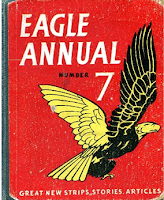
The Catcher in the Rye (5*)
Another book not picked up since I was a teenager at school, indeed, to be honest, the very same book in which roughness on the inside of the front cover betrays where the school label has been cunningly removed.
I was unable to finish it in those days. I went through several years of not being able to read anything much at all. I would begin earnestly enough but quickly find myself stepping mentally away and thinking good, I am now reading, really reading, which meant that I wasn’t, which is why I am having to catch up with all these books now.
That sounds almost like the kind of thing the protagonist, Holden Caulfield, would say. I can still, just about, identify with him. Holden has been kicked out of boarding school for failing in nearly everything. He wanders aimlessly around New York for a couple of days, avoiding home and parents and trying to pass for older than his sixteen years. He books into a hotel and goes out for drinks. The lift man fixes him up with a prostitute and then beats him up. He sees an old friend and falls out with a girl friend. He nearly freezes to death. Throughout, we hear his constant, drifting thoughts: hating everything, disliking everyone, moaning about all the superficiality and insincerity he sees; the original angst-filled teenager.
The thing he hates most is “phoneys”: the headmaster who will only talk with influential parents; his older brother for cashing in his talent to write for Hollywood; the lawyers in it for the money rather than to help people. Yet the biggest phoney of all is himself. He tells you the one thing he can’t stand is the movies and then a few pages later talks about going to see them. He pretends to like teachers who try to help him. He gets into conversation with the mother of a pupil he dislikes, and lies about what a popular and sensitive boy her son is, the complete opposite of what he really thinks. He then lies to her about why he is not in school:
‘No, everybody’s fine at home,’ I said. ‘It’s me. I have to have this operation.’The only person Holden genuinely respects is his young sister Phoebe, and when he sneaks home to see her she accuses him of liking nothing and of not wanting to be anything. He says the only thing he wants to be is the catcher in the rye:
‘Oh! I’m so sorry,’ she said. She really was, too. I was right away sorry I’d said it, but it was too late.
‘It isn’t very serious. I have this tiny little tumour on the brain.’
‘Oh, no!’ She put her hand up to her mouth and all.
‘Oh, I’ll be all right and everything! It’s right near the outside. And it’s a very tiny one. They can take it out in about two minutes.’
Then I started reading this time-table I had in my pocket. Just to stop lying. Once I get started, I can go on for hours if I feel like it. No kidding. Hours. (p62)
You know that song “If a body catch a body comin’ through the rye”? … I keep picturing all these little kids playing some game in this big field of rye … And I’m standing on the edge of some crazy cliff. What I have to do, I have to catch everybody if they start to go over the cliff … That’s all I’d do all day. I’d just be the catcher in the rye. (p179)
which shows how adrift he is. “It’s if a body meet a body,” says Phoebe. “It’s a poem by Robert Burns.”
Many will hate this book and find Holden Caulfield repugnant. I loved both. Holden is real and vivid enough, I imagine, still to ring true with teenagers today. I laughed out loud at some of his overstatements, such as when he meets “... one of those guys that think they’re being a pansy if they don’t break around forty of your fingers when they shake hands with you” (p91). Most of what he tells you is a façade: he is yet another unreliable narrator with a distinctive first-person voice. Beneath the resentment he is intelligent, perceptive and generous: he reads a lot, lends his jacket to a school friend and writes an English essay for him – the one subject he is good at. Only when his sister Phoebe trusts him unreservedly in her readiness to run away do we glimpse hope as he starts to accept responsibility. He catches her from going over the edge of the cliff. Which takes us back to the start of the novel when he is recovering in an institution and telling us “... about this madman stuff that happened to me around last Christmas before I got pretty run-down and had to come out here and take it easy.”
Only one scene has stayed with me from my attempted reading so long ago, which is when Holden looks out through the darkness from his hotel window into other illuminated, uncurtained rooms to see a couple at play and a man dressing up in women’s clothes. Funny what you remember.
Key
to star ratings: 5*** wonderful and hope to read again, 5* wonderful,
4* enjoyed it a lot and would recommend, 3* enjoyable/interesting, 2*
didn't enjoy, 1* gave up.
Previous book reviews



